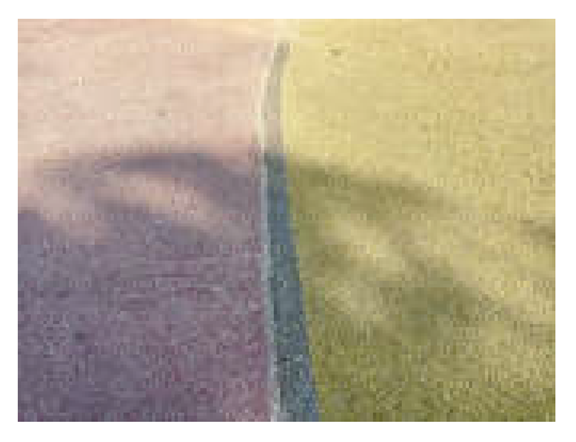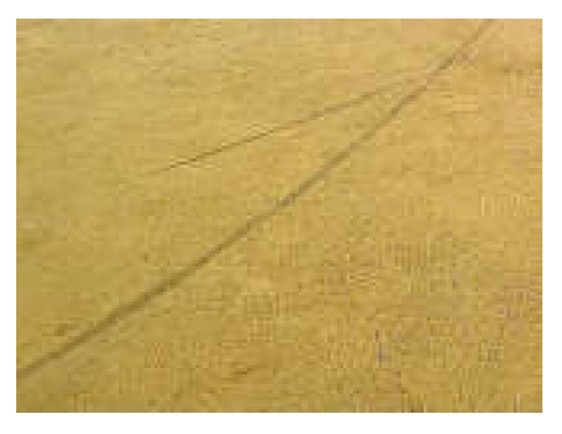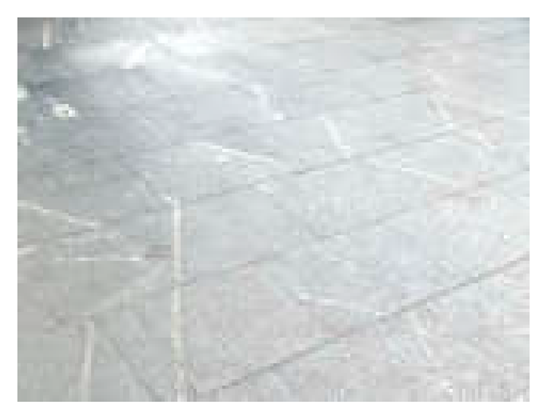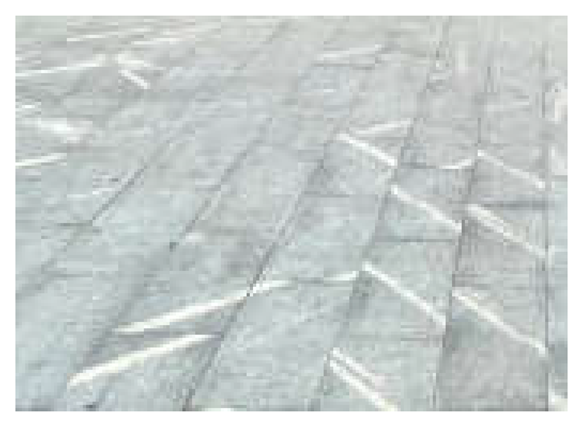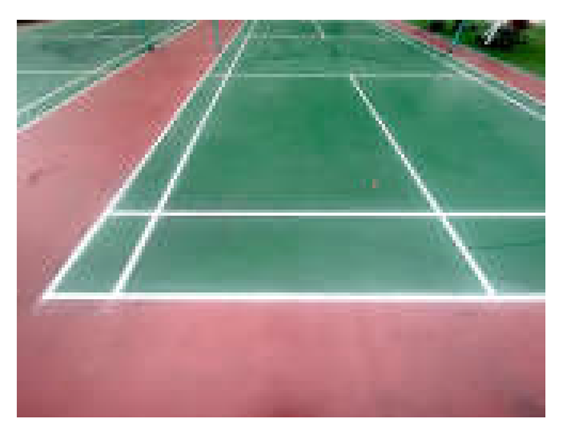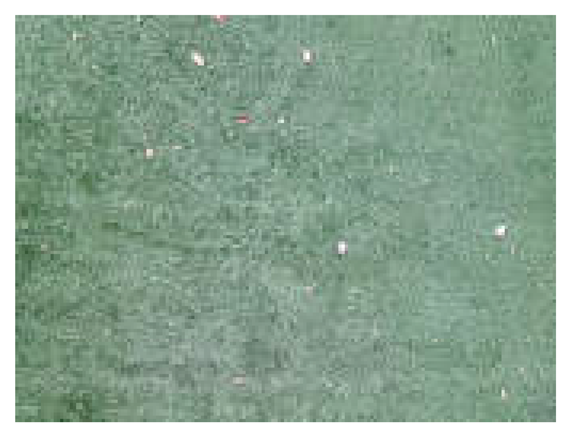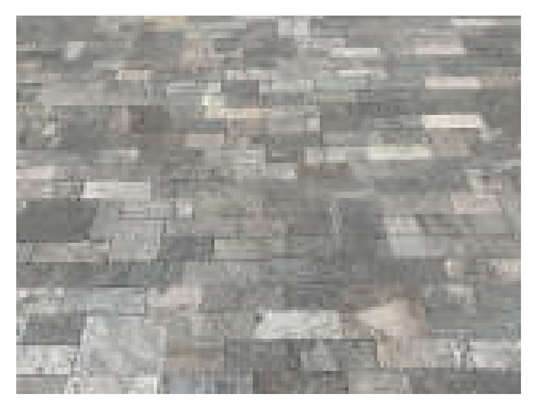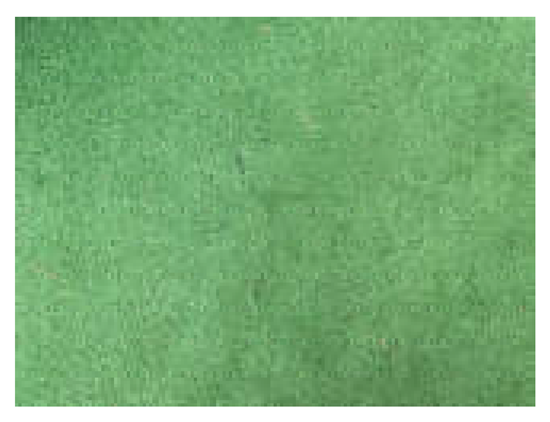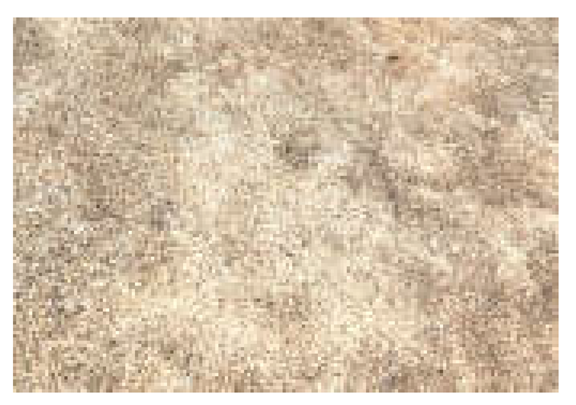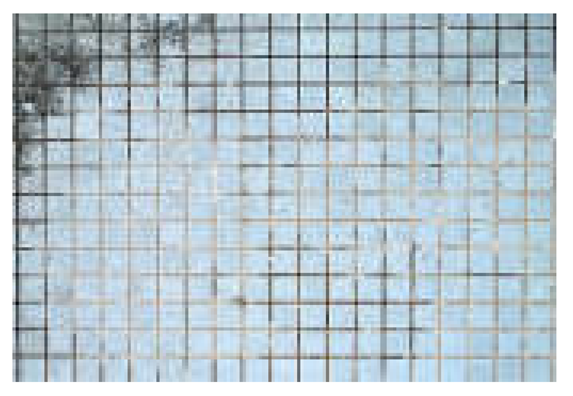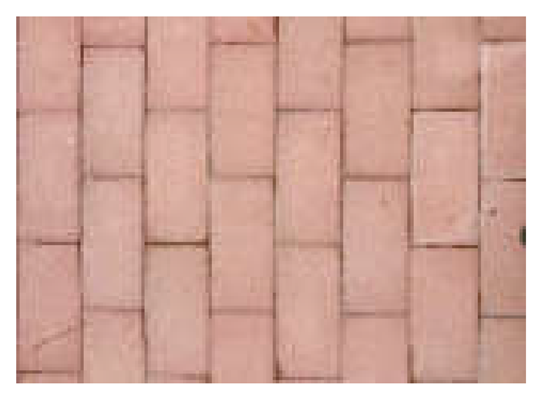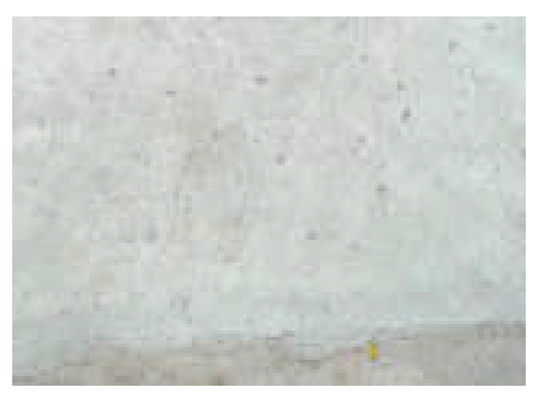Abstract
In humid subtropical areas, outdoor sports activities in winter and spring are very common. However, there is minimal research surrounding this topic, especially in terms of thermal comfort. This study explored the complex relationship between microclimate and human thermal comfort during various types of outdoor sports activities through a series of outdoor thermal experiments and analysis. The results indicated that (1) in winter and spring, the WBGT comfort threshold for outdoor sports space was 14.6–21.7 °C; (2) the WBGT comfort ranges when doing low-, moderate- and high-intensity physical activities were 13.7–26.2 °C, 14.5–24.0 °C, and 16.0–22.0 °C; (3) air temperature (Ta), G (global radiation) and relative humidity (RH) were the main thermal comfort influencing factors, which varied from the intensities of physical activities; (4) in winter, it was more comfortable to be slightly warm, while in spring, it was more comfortable to be neutral; (5) the ground materials, sunshine and vegetation coverage of outdoor sports space had a significant impact on adjusting Ta; (6) in addition to thermal comfort, factors such as time, weather, variety and quantity of outdoor sports spaces and facilities, high visual comfort, good accessibility, strong safety, regular maintenance of the space and facilities and the sharing level of outdoor sports spaces all had a major impact on outdoor sports activities; (7) semi-outdoor spaces with roofs should be considered next to outdoor sports spaces.
1. Introduction
Nowadays, the phenomenon of inactive physical activities is very serious worldwide [1]. Research has confirmed that outdoor physical activities are more beneficial to health than indoor physical activities, especially in releasing stress and promoting positive emotions [2]. Designing safe, comfortable and pleasant outdoor sports space in residential communities can increase the residents’ enthusiasm to participate in outdoor physical activities [3]. This can improve the overall sports and fitness atmosphere in residential areas, and it is closely related to promoting residents’ physical and mental health.
Numerous studies on outdoor sports space have mainly explored factors that affect outdoor sports participation in parks [4,5], greenways [6], city squares [7], open gyms [8] and school playgrounds [9]. These studies have revealed that residents’ individual characteristics, environmental factors and social factors all have an impact on the level of user participation in outdoor sports activities. A preliminary study confirmed that the highest total attendance occurs when people feel most comfortable [10]. The users’ comfort sensation and the total attendance showed different degrees of influence by the thermal conditions in terms of the functional types of outdoor sports spaces [11]. Moreover, users’ location selection revealed an intense dependence on microclimate compared to the equipment and facilities on site [12]. Therefore, microclimate thermal comfort can be one of the most important factors affecting residents’ outdoor sports activities [13,14].
Thermal comfort is the state of consciousness that people are satisfied with whilst in the thermal environment. In recent decades, there has been an increasing amount of research on microclimate analysis, outdoor thermal comfort and discomfort assessment from different climatic regions. The great majority of studies have been conducted on the correlation between the outdoor microclimate, outdoor thermal comfort and the users’ behavior and have put forward some optimized design methods for outdoor thermal environment comfort [15,16]. These research studies are based on the local climate, urban layout and social culture; however, there are significant differences in people’s thermal adaption among different regions.
Some studies in temperate regions concerning outdoor thermal comfort and adaptive behaviors pointed out that thermal environment parameters such as Ta, Va (air velocity) and clearness index (cloud cover) [17], accessibility and sense of design all had a significant impact on people’s attendance [18]. In severe cold areas, when Ta reached about 4 °C in winter and marginal seasons, the microclimate conditions begun to influence users’ behavior and the public life of urban spaces positively [19]. In subtropical areas, it was found that the total attendance and the average occupancy period of a day had a strong linear relationship with the daily mean Ta all year [20]. Da Silveira Hirashima [21] demonstrated that in tropical savanna climate areas, design strategies such as shading, exposure to the wind and providing more environmental diversity could improve the urban environment and residents’ experience.
Regarding former studies in hot and humid regions, subjects from subtropical and tropical climate zones instinctively preferred a cooler thermal state and weaker sunlight, and the thermal comfort range and neutral temperature of the subjects were higher than those of people in a temperate region (Lin [7]; Wang [22]; Zhao [23]). During the cool season, warmer thermal conditions contributed to more attendances. Conversely, the attendances decreased as the thermal index increased during the hot season [24]. These studies have mainly addressed people’s thermal perception, thermal preference, thermal adaption processes and behaviors.
In humid subtropical areas, outdoor sports activities in winter and spring are very common in the outdoor sports space of residential communities. Related research have rarely verified the main environmental factors affecting residents’ outdoor sports activities during the winter and spring marginal season. Furthermore, the residents’ assessment of thermal environments can be varied by the types and intensities of the physical activities they take part in [7]. Thus, the first crucial topic for this study was to conduct a comprehensive investigation into the spring and winter microclimate and thermal comfort conditions people experienced according to the intensity of outdoor sports activities and to discover the main environmental factors affecting residents’ outdoor sports activities in humid subtropical areas during winter and spring.
The most widely used thermal comfort indices for outdoor thermal environment assessment include WBGT (wet-bulb globe temperature), PET (physiologically equivalent temperature), UTCI (universal thermal climate index), OUT_ SET* [25] (outdoor standard effective temperature), predicted mean vote (PMV) and Tmrt (mean radiant temperature), etc. [22]. In 1957, the US Navy first proposed the WBGT index, which was used to prevent thermal injury accidents in military training. In 1986, Akio Morikawa [14] believed that WBGT should be used as a comprehensive thermal index for outdoor thermal environments. Currently, it is mainly considered along with metabolic rate to evaluate the potential for heat stress during high-temperature operations or outdoor sports.
Previous studies concerning outdoor thermal comfort obtained thermal comfort thresholds from few dimensions. Some researchers focused on developing a thermal comfort range by estimating neutral, preferred and acceptable temperatures [21,22,26]. Some studies used the 90% thermal acceptable PET range [13,27], some obtained the SET* thermal comfort zones from the predicted percentage of dissatisfied (PPD) users [20], some determined the threshold value of WBGT from the TCV (thermal comfort vote) [28]. Nevertheless, there has seldom been research considering the WBGT threshold range for the winter and spring marginal seasons in humid subtropical areas. This study is expected to fill this gap by finding out the WBGT thermal comfort threshold from the combination of four dimensions: TCV, TSV (thermal sensation vote), URV (thermal unacceptable rate vote) and TPV (thermal preference vote).
In summary, exploring the outdoor thermal environment and adaptability of humans in humid subtropical areas during the winter and spring marginal seasons from the perspective of thermal comfort is of great significance for creating high-quality outdoor sports space in residential areas. The purpose of this study was to explore ways to improve thermal comfort in winter and spring and to scientifically develop design strategies for a comfortable outdoor sports space in humid subtropical areas.
2. Materials and Methods
2.1. Study Area and Climate
Xiamen is a typical humid subtropical area, belonging to the subtropical marine monsoon climate. It is hot in summer and warm in winter, with high humidity and strong solar radiation throughout the year and prevailing easterly winds. Figure 1 shows the meteorological records of Xiamen by the National Observatory of Xiamen’s meteorological station (no. 56294), the annual average temperature for Xiamen Island is about 21.4 °C, with January having the lowest average temperature at 13.4 °C and an average minimum temperature of 10.8 °C. This study lasted from January to April in 2023, spanning the winter and spring seasons. This study selected residential communities with clustered outdoor sports venues and rich facilities in Xiamen as the research object. The scope of the research was 2 residential quarter communal parks and 1 nearby residential community park in Lianxing Community, Siming District. This community was chosen to be one of the Xiamen’s 15 min living-circle pilots in 2022. The monitoring spots included Binglang Fitness Park, Xinjing Center Phase II and Lianban New Village Phase II. The study sites with the observed spot distribution and typical scenarios are shown in Figure 2.
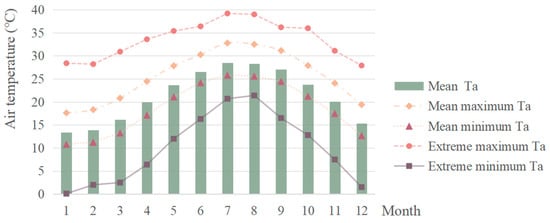
Figure 1.
Monthly variation of air temperature in Xiamen (January 2000–April 2023. Meteorological data source: National Meteorological Science Data Center).
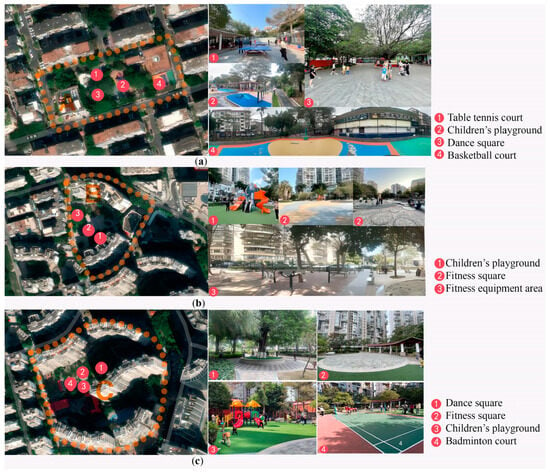
Figure 2.
Pictures of the study sites and observed spots: (a) Binglang Fitness Park; (b) Xinjing Center Phase II; (c) Lianban New Village Phase II.
2.2. Observations and Recording
The experiment was conducted during the winter (January–February) and spring (March–April), with a total of 17 monitoring days (Table 1). The peak hours of residents’ daily physical activities we selected to monitor were from 9:00 to 20:00. To evidence this, we observed the residents’ behavior every 10 min with 67 observations per observed spot each day and used high-resolution cameras to take on-site photos and 360° panoramic images. The information about date, time, weather conditions, the number and types of physical activity attendances were recorded during the observation process.

Table 1.
The survey schedule.
2.3. Meteorological Measurements
The microclimate environmental thermal parameters were measured at a height of around 1.5 m from the ground (Figure 3a), including Tgm (ground material temperature), Ta, Tg (globe temperature), RH, WBGT, Va and solar radiation (SR) with infrared thermometers, thermal index WBGT meter, hand-held anemometers and solar power meter (Figure 3b, Table 2). The measurement points were set in a central position of the observed spots, where they would not affect the normal physical activities of the users. The measurement for physical environments was conducted in 10 min intervals from 9:00 to 20:00. The accuracy and range of the used test instruments complied with the relevant regulations of ISO 7726-1998 [29]. Microclimate data of urban background points were obtained from China Meteorological Data Network, including weather and hourly water vapor pressure.
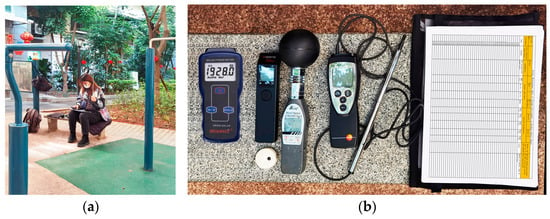
Figure 3.
(a) The usage of the thermal environment testing instruments during the field measurement campaign (b) Used testing instruments: left to right are solar power meter, infrared thermometers, tape measure, thermal index WBGT meter, hand-held anemometers, and data record table.

Table 2.
Parameters of thermal-environment testing instruments.
2.4. Questionnaire Surveys and Interviews
While doing observation and microclimate data measurement, residents were chosen at random to complete mobile phone questionnaires simultaneously. Alongside this, 205 interviews were conducted to learn about residents’ feelings of using outdoor sports spaces and their opinion of future developments. A total of 1497 questionnaires were distributed, with 1488 valid questionnaires. The questionnaire involved 3 parts: basic information about the respondent, thermal perception and thermal environment experience. The first part included the respondents’ gender, age, temperature preference. For example, a person’s preference for cold relates to a dislike for heat and vice versa. In the second part of the thermal research, the respondents were required to conduct a personal assessment on the selection of the current thermal environment, including TSV, TCV, URV and TPV. The level scales for the second part is shown in Figure 4. The ASHRAE 7-point thermal perception voting was used for the thermal sensation evaluation, the 5-level scale was used for thermal comfort voting, and the 4-degree acceptance scale was used for thermal environment unacceptability voting [30,31]. The Mclntyre preference scale was used for thermal preference voting, which indicated attendees who preferred warmer or cooler conditions. The third part of the thermal environment experience included the activities conducted by residents and the duration and stop time of the activities.
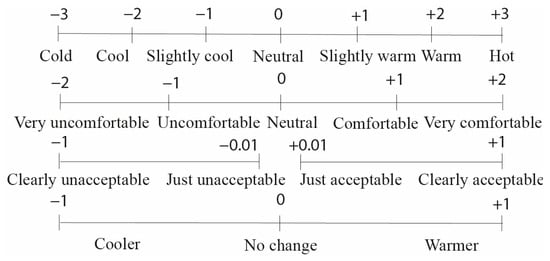
Figure 4.
Scales for TSV, TCV, URV and TPV.
2.5. Outdoor Thermal Comfort Index
WBGT is a comprehensive outdoor thermal comfort index and it is actually related to all factors that affect heat stress in the human environment. It takes into account Ta, Tg, Tnw (natural wet-bulb temperature), air movement and SR [32,33]. Tg assesses the total radiant heat load from the sun and other sources, which is related to Ta, Tmrt and Va. Tnw is related to RH, Va, Ta and the radiation temperature [34]. To determine the WBGT and show the relationship between the different parameters, formulas (1) and (2) were applied to calculate where there was radiant heat load with or without direct solar radiation [35,36,37].
Where there was radiant heat load with solar load, the equation is expressed as:
WBGT = 0.7tnw + 0.2tg + 0.1ta
Where there was radiant heat load without solar load, Equation (1) will be further simplified as:
WBGT = 0.7tnw + 0.3tg
It was applicable and suitable to use WBGT as the outdoor thermal index in the present study. Firstly, the study area is in humid subtropical areas which belongs to the hot summer and warm winter climatic regions with humid and hot weather. Moreover, for outdoor sports spaces, it is necessary to assess heat stress in the thermal environment while doing physical activities. As a heat stress evaluation index for the safety of outdoor thermal environment, WBGT can also be used as a comfort evaluation indicator [38]. Thirdly, a series of international standards and Chinese national standards have provided clear guidance on the use of WBGT. These include standards for the assessment of hot, moderate and cold environments involving both the principles of assessment and their practical application [39]. Furthermore, a thermal index WBGT meter can directly measure the WBGT values, making it flexible and easy to obtain.
3. Actual Measurement Results
3.1. Factors Affecting Ta
The changes of Ta in Binglang Fitness Park, Lianban New Village and Xinjing Center Phase II were measured. Taking the average Ta of two spring days in Binglang Fitness Park as an example, Figure 5 shows that the average Ta of the basketball court was higher than other measuring spots most of the time, followed by the table tennis court and children’s playground. The dance square had the highest vegetation coverage, leading to the lowest Ta throughout the day. This was because these three measuring spots were relatively open with large, paved areas, resulting in an increase in direct solar radiation and surface radiation absorption and an obvious increase in Ta [28]. It can be seen that vegetation had an important impact on adjusting Ta. In addition, the Ta of the three open spaces had obvious differences. By comprehensively analyzing of the results of Ta and Tgm obtained from the infrared thermometers, this result may be related to the influence of ground materials on the microclimate [40]. Subsequently, the average Ta for two winter days in Binglang Fitness Park was analyzed and the results remained the same.
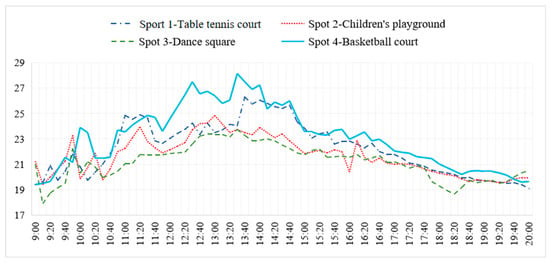
Figure 5.
Hourly Ta change in spring in Binglang Fitness Park 09:00–20:00.
By analyzing Ta of Xinjing Center Phase II in two winter days and two spring days, it was found that sunshine and the selection of ground material had a significant impact on Ta. Firstly, a significant positive correlation was found between the intensity of Ta and SR (ρ = 0.458 **, p = 0.000). The same was observed between Tgm and SR (ρ = 0.109 **, p = 0.000) and between Ta and Tgm (ρ = 0.142 **, p = 0.000). In order to determine the affecting process and mechanism of the interaction among the three variables, two mediation analyses were conducted on the assumed Model 1 and Model 2 (Figure 6 and Figure 7).

Figure 6.
Model 1: hypothetical model, verified.

Figure 7.
Model 2: hypothetical model, verified.
As shown in Table 3, the impact of SR on Ta was partially achieved through Tgm, while the other part was still mainly achieved through direct effects; thus, Model 1 was validated. Meanwhile, it was found that the effect of SR on Tgm was partially influenced by Ta (Table 4), and the proportion of mediating effect was 48.712%.

Table 3.
Summary of Model 1’s mediating effect quantity.

Table 4.
Summary of Model 2’s mediating effect quantity.
Overall, it can be concluded that Ta and Tgm had a mutual influence. SR had a direct impact on Ta and could regulate Ta by affecting Tgm. That is to say, Ta can be adjusted by selecting appropriate ground materials, and the solar radiation intensity of outdoor sports spaces can be controlled through design to regulate Ta.
See Table 5 for the list of ground materials at the three study sites. Combined with the measured results of Ta and Tgm measured by infrared thermometers, it was found that the EPDM surface and acrylic acid had the best thermal insulation performance, followed by terrazzo, square tiles, square stone bricks and pedestrian road bricks. Cement and artificial turf were the worst.

Table 5.
List of ground Materials at the three study sites.
3.2. Micrometeorological Conditions
A correlation analysis was performed between the daily average Ta and average RH in winter and spring. Excluding fluctuation data caused by occasional spring showers, the average 09:00–20:00 hourly meteorological conditions from 17 days of meteorological measurement are shown in Figure 8. It was found that the Pearson correlation coefficient was −0.602 with a significance level of 0.01. This indicated that there was a significant negative correlation between the average Ta and average RH. During the measurement period, the Ta difference between day and night was relatively large in winter, reaching up to 7.8 °C, while in spring, the Ta difference was only 4.80 °C. Furthermore, it showed that the correlation coefficient value between daily average wind speed and WBGT was 0.60 and showed significance at the 0.01 level, indicating a significant positive correlation between average wind speed and WBGT.
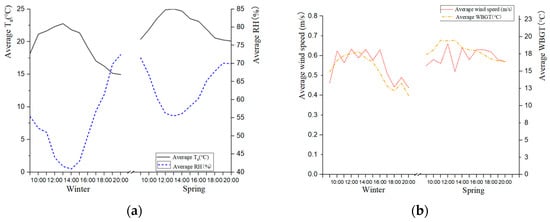
Figure 8.
Hourly meteorological conditions in winter and spring 09:00–20:00. (a) Ta and RH; (b) Va and WBGT.
It can be seen from Table 6 that the average Ta and average WBGT in winter were 2.03 °C and 2.77 °C lower than that in spring, while the average RH was 16.26% lower. The average wind speeds in winter and spring were both lower than 0.6 m/s, which was relatively gentle. The maximum WBGT value in winter and spring was 27.3 °C. According to ISO 7243-2017 [39], during some high WBGT periods, it is still necessary to pay attention to preventing heat stress when engaging in moderate- (metabolic rate from 235 to 360 W) and high-intensity activities (metabolic rate from 360 to 465 W) for persons unacclimatized to heat, and for those acclimatized to heat, they should take care when joining high and very high intensity activities (metabolic rate more than 465 W). Extreme cold weather also requires attention to cold prevention.

Table 6.
Measured results of Ta, RH, Va and WBGT in winter and spring from 09:00 to 20:00.
3.3. Space Use
The residents’ physical activities during peak hours were monitored from 9:00 to 20:00 every 10 min. In the Binglang Fitness Park, the table tennis court area experienced a significant decrease in usage during the period from 11:00 to 13:30, both on weekdays and weekends. This was likely due to the lunch break. During the measurement period, the number of users decreased sharply within half an hour after sunset, as this area did not have night lights installed. At night, there were still experienced enthusiasts who brought their own lighting to play table tennis, which slightly increased nighttime usage.
The children’s playground of the Binglang Fitness Park generally carried the functions of childcare and children’s games, and there were square dancers occupying this spot during specific time periods from 15:00 to 15:30 every day. After 18:30, the number of people gradually decreased, and after 19:30, there were more people gathering again, which should be dinner time. The dance square area mainly focused on square dancing, dog walking, cycling, skateboarding and sales activities. The number of people using the dance square on weekends had a significant increase with multiple peaks, which was related to the square dance crowd at different time periods. The activities in the basketball area were mainly basketball and badminton, and there were supplemented functions such as sitting, parenting and other exercises. Compared to weekdays, the attendance at the basketball court on weekends was significantly increased, especially after 2 pm. Due to the small area and limited variety of equipment in the equipment fitness area, the users usually left after using a 10 min “spacewalk” equipment. During the Spring Festival holiday, residents’ overall use of the park decreased.
To sum up, there was significant differences in attendance during weekends and weekdays, days and nights, long holidays and nonholidays. In addition, the daily life patterns of the residents affected the occupancy as well. For instance, lunch break with a nap afterwards, dinner time, time for picking up children and shopping in the morning market also significantly reduced the attendance. Due to the different functions of the observed spots and the different user groups, there were differences in the peak hours of space usage. However, whether it was the outdoor sports space in a community park or residential quarter communal parks, 9:30–11:30; 16:30–18:00 and 19:00–20:00 were the periods with the highest usage rates.
Through interviews, we asked about what issues affected the attendees’ participation frequency in outdoor sports activities. Among the 205 respondents, 46.34% of them believed that a lack of variety for outdoor sports spaces and facilities mattered most, 44.39% believed that the uneven distribution and far distance had the greatest impact, and 42.93% believed it was the insufficient outdoor sports spaces and facilities that bothered them. We also asked about which factors may attract the attendees to participate in outdoor physical activities. Good thermal comfort was the most important factor (75.12%). Except for that, high visual comfort in environmental design (74.63%), good accessibility (44.39%) and strong safety (42.93%) were all the influencing factors.
In terms of outdoor sports space management, the lack of night lighting, rain leakage in the pavilion, serious damage to the ground and facilities and lack of maintenance could cause less attendance, the loss of original function and even danger. For example, the basket in the northern basketball court of Binglang Fitness Park was damaged, and the venue had become a place for boxing, football, childcare and other activities.
Kruger indicated that the differences in weather were related to the thermal sensation of participants [41]. The main impact of the weather in this study was that on rainy days, no one engaged in outdoor physical activities, and immediately after the rain, the crowd would gather again. Furthermore, there were fabric rest seats on the west side of the table tennis court, which could not be used if they were soaked with too much rainwater after rain. Due to the unique climate characteristics of humid subtropical areas, where solar radiation is strong and rainy, it is recommended to add semi-outdoor spaces or indoor spaces next to outdoor sports spaces that can provide shelter with seats from sunshine and rain.
The three sites surveyed in this study had basically a similar area and scale, but the attendees’ participation frequency of community park was much higher than that of the two communal parks in the residential quarters, and its service coverage was also wider. This indicates that residents’ territorial awareness and the sharing status of outdoor sports spaces can also affect their frequency of use.
When observing and interviewing residents about their use of outdoor sports space, it was found that in addition to thermal comfort, factors such as time, weather, scientific variety and the quantity of outdoor sports spaces and facilities, high visual comfort, good accessibility, strong safety, regular maintenance of the space and facilities and the sharing level of outdoor sports spaces all had a major impact on outdoor sports activities.
4. Outdoor Thermal Comfort Questionnaire Analysis
4.1. Thermal Comfort Parameters Vote
A previous investigation has shown that Ta and G are significant factors influencing outdoor thermal sensation [42]. As shown in Figure 9, in general, more than half of the residents (51.04%) believed that Ta was the most important factor affecting thermal comfort in winter and spring, followed by G (20.17%) and RH (16.30%). Moreover, G (22.98%) and Va (22.00%) had a greater impact in winter, while RH (19.59%) and G (19.31%) had a greater impact in spring.
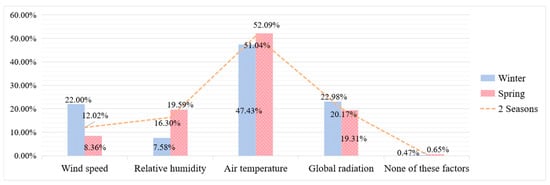
Figure 9.
The main physical factors affecting thermal comfort in winter and spring.
Figure 10 was illustrated based on thermal comfort factors in winter and spring regarding the intensities of physical activities. For the low-intensity physical activities (such as sitting, standing, walking, using fitness equipment, children’s games, etc.), Ta and G were the most important factors affecting thermal comfort, followed by RH, and Va had the least impact. For the moderate- (jogging, cycling, fast walking, ballroom dancing, tai chi, square dancing, yoga, bowling, playing table tennis or badminton, etc.) and high-intensity sports activities (swimming, running, fast cycling, using horizontal bars, parallel bars, aerobics, sword dance, boxing, playing football, basketball, volleyball, tennis, etc.), Ta and RH were the most important factors. Additionally, 23.26% of the high-intensity exercise attendees believed that Va had a significant impact. It can be seen that as the intensity of physical activity increased, the proportion of people who believed that Ta and G were the main factors affecting comfort decreased.

Figure 10.
Factors affecting thermal comfort of different physical activity intensity groups in winter and spring.
4.2. Quantitative Evaluation of Thermal Sensation
As shown in Figure 11, in winter, the “slightly warm” sensation (TSV = 1) was more comfortable than the “neutral” (TSV = 0) sensation, while for two seasons and spring, people preferred neutral conditions. To establish the relationship between the TSV and WBGT in winter and spring, WBGTs were grouped by interval of 1 °C and the TSVs in each interval were averaged. From Figure 12 and Table 7, it can be seen that there was a binomial relationship between the TSV and WBGT in winter and spring. When the WBGT was equal to 14.2–21.7 °C, it belonged to the moderate range of neither cold nor hot. The WBGT comfort range with a “slightly warm” sensation in winter was 14.8–22.6 °C, and the WBGT comfort range with a “neutral” sensation in spring was 16.4–23.0 °C.
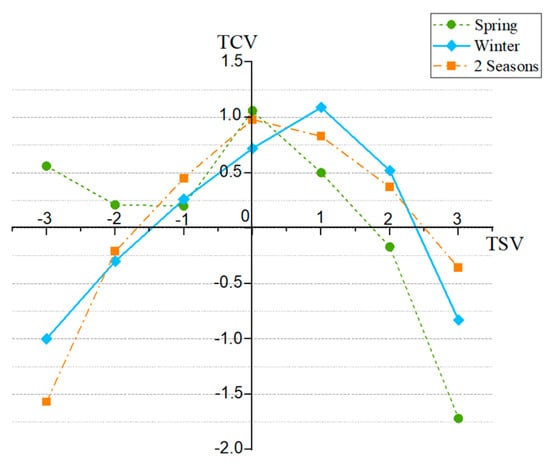
Figure 11.
Relationship between TCV and TSV in winter and spring.
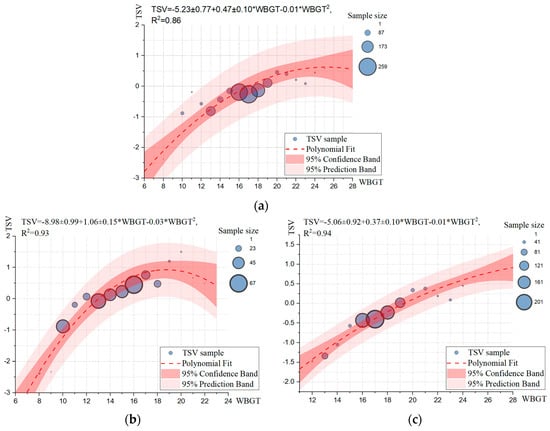
Figure 12.
Relationship between TSV and WBGT: (a) winter and spring; (b) winter; (c) spring.

Table 7.
The WBGT range of thermal sensation in winter and spring.
4.3. Quantitative Evaluation of Thermal Comfort
The TCV and WBGT showed a binomial correlation in winter and spring (Figure 13). When the WBGT was 14.1–28.9 °C, comfortable (TCV ≥ 0.5) votes began to appear. The comfortable WBGT ranges for winter and spring were 12.1–22.2 °C and 16.1–26.8 °C. Interestingly, the comfortable voting in a low WBGT (11.0–12.0 °C) environment mainly came from the attendees with low- or moderate-intensity physical activities. It can be seen that during the urban design process on outdoor sports space, it was conducive to improving the overall thermal comfort of outdoor sports space during winter and spring by strengthening the consideration of the impact of the microclimate’s thermal environment and increasing the development of low- and moderate-intensity outdoor sports space and facilities.
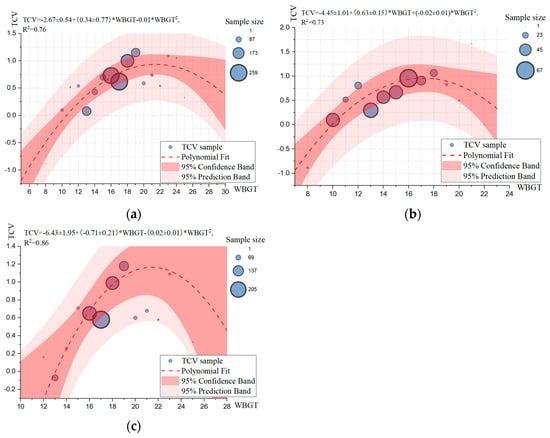
Figure 13.
Correlation between TCV and WBGT: (a) winter and spring; (b) winter; (c) spring.
Classifying the TCV according to different physical activity intensities (Figure 14), it was found that the TCV and WBGT showed a binomial relationship during the low-intensity physical activity, a linear positive correlation at moderate intensity and a Boltzmann relationship at high intensity. For people engaging in low-intensity physical activity, the comfort WBGT range that residents felt comfortable (+1) or very comfortable (+2) with was between 13.7 and 26.2 °C during winter and spring. After moderate-intensity sports activities, most residents’ WBGT comfort range was between 14.5 and 24.0 °C. The individual high-comfort voting at 11–12 °C was a unique case because the sample size was too small, which may have been caused by prominent individual differences. The comfortable range of WBGT for high-intensity sports activities was between 16.0–22.0 °C.
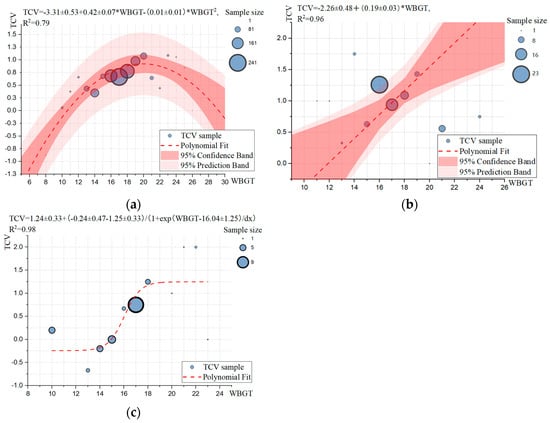
Figure 14.
The correlation between TCV and WBGT among different physical activity groups in winter and spring. (a) Low-intensity sports activities; (b) moderate-intensity sports activities; (c) high-intensity sports activities.
According to Table 8 obtained by the same method, it should be noted that the threshold of thermal comfort varied depending on the intensity of sports activities. For the same season, with the increase in physical activity intensity, the lower limit of thermal comfort threshold increased, the comfort threshold narrowed, and people’s sensitivity to thermal environment increased. Thermal comfort thresholds for outdoor sports activities of different intensities can be used for a variety of other applications.

Table 8.
Calculation of thermal comfort threshold for different-intensity physical activities in winter and spring.
4.4. Quantitative Evaluation of Thermal Unacceptability Rate
To ensure the typicality of the unacceptability rate vote, votes with a sample size of less than 10 were not analyzed as statistical data. According to ASHRAE standard 55 [36], an acceptable thermal environment must be acceptable by at least 90% of people in the space [14]. The 90% thermal acceptability range in winter and spring was 11.6–25.1°C, with 15.7−23.4 °C in spring and 11.4−20.5 °C in winter (Figure 15).
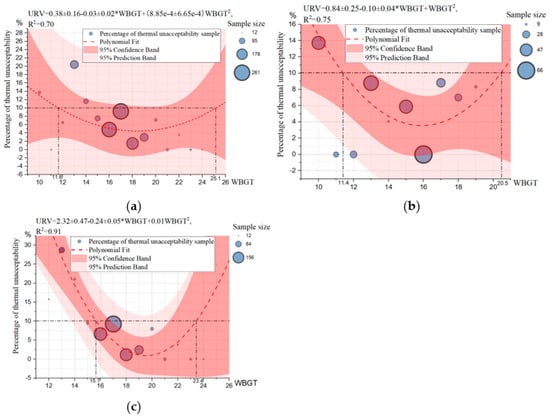
Figure 15.
Relationship between URV and WBGT. (a) Winter and spring; (b) winter; (c) spring.
4.5. Quantitative Evaluation of Thermal Preference
Analyzing the relationship between TPV and WBGT, it was found that during winter and spring, when the WBGT was between 7.4 and 14.6 °C, more than 74.71% people felt that the overall thermal environment being warmer would be more comfortable. When the WBGT was between 14.6 and 24.4 °C, more than half of the interviewees believed that the thermal environment did not need to be changed. When the WBGT was between 24.4 and 26.6 °C, most people hoped it to be cooler (Figure 16).
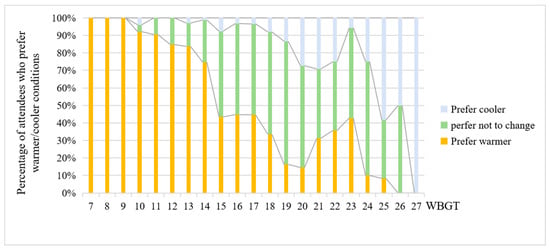
Figure 16.
The relationship between TPV and WBGT in winter and spring.
The same method was used to obtain thermal preference in winter. When the WBGT was between 7.4 and 15.5 °C, most people felt that the overall thermal environment being warmer was more comfortable. When the WBGT was between 15.5 and 21.9 °C, most people believed that the thermal environment did not need to be changed. When the WBGT was between 12.1 and 14.6 °C in spring, most people felt that the overall thermal environment being warmer was more comfortable. When the WBGT was between 14.6 and 24.4 °C, most people believed that the thermal environment did not need to be changed. When the WBGT was between 24.4 and 26.6 °C, most people hoped it to be cooler.
5. Discussion
5.1. Thermal Comfort Threshold
Based on the analysis above, in humid subtropical areas, a slightly warm (TSV = 1) thermal environment during winter was more comfortable and suitable for outdoor sports activities; for the two seasons and spring, a neutral (TSV = 0) thermal environment was more comfortable. In the severe cold areas of China, the users of public spaces believed that “warm” was comfortable during the spring marginal season [13], indicating that the outdoor thermal comfort of users in the humid subtropical had regional characteristics. According to the four dimensions of the 10% thermal unacceptability range, thermal sensation range, thermal comfort range and thermal environment preference range, the thermal comfort threshold in winter and spring was calculated based on the minimum interval that overlapped with the four dimensions’ intervals (Table 9).

Table 9.
Calculation of thermal comfort threshold in winter and spring.
The comfort WBGT threshold of outdoor sports space in winter and spring was 14.6–21.7 °C, while the comfort WBGT threshold ranged from 15.5 to 20.5 °C in winter and from 16.4 to 23.0 °C in spring. These thermal comfort ranges were narrower compared to other high-latitude cities, which indicated that residents were more sensitive to the climate changes in Xiamen during spring and winter.
There are a great number of WBGT ranges outside the thermal comfort threshold that are acceptable. Therefore, we proposed our thermal comfort threshold in this study as an “absolute comfort zone”. The single-dimension acceptable or preferred thermal environment WBGT range was the “relative comfort zone”. This result should provide references for outdoor thermal environment control in future microclimate environmental design. Moreover, some commonly used heat stress indices (such as PET and UTCI) can be compared and analyzed to determine the applicability of the WBGT thermal comfort threshold in future work.
5.2. Seasonal Thermal Sensation
Previous studies have proved that subjects’ psychological factors can affect thermal perception, indicating that residents adjusted their expectations during different seasons [7,43]. The TSV change ranges were 3.82 in winter and 2.47 in spring, while the WBGT range variation was kept the same at 15 °C. We can conclude from this that the subjects’ thermal sensation was more sensitive in winter than in summer. Compared to Li’s [27] research conducted in Guangzhou, China, it can be found that this result is consistent in the same climatic region.
The ASHRAE’s seven-point thermal perception voting was used for the thermal sensation evaluation. In winter, the “slightly warm” sensation (TSV = 1) was more comfortable than the “neutral” (TSV = 0) sensation, while for two seasons and spring, people preferred neutral conditions. However, different results were obtained in the studies of Guangzhou [27] where “neutral” was never a situation in which residents felt comfortable and in spring, people preferred warm conditions (TSV = 0.2). This was probably caused by the authors using ASHRAE’s nine-point thermal perception voting and their definition of “warm conditions”. Even though their “neutral” condition was set as “0”, and “slightly warm” as “+1”, which was the same as in this study, they considered “TSV = 0.2” as “warm conditions”. In this study, all value ranges were rounded off, which meant that “TSV = 0.2” was closer to be “neutral” than “slightly warm”.
5.3. Personal Factors on Human Environmental Adaptability
By performing a correlation analysis on the basic information of the population and the four dimensions of TCV, TPV, URV and TSV, it was found that gender was significantly correlated with TCV (ρ = 0.105 **, p = 0.000) and TSV (ρ = −0.065 *, p = 0.027), but not with TPV and URV. Age had a significant correlation with TCV (ρ = 0.140 **, p = 0.000), TPV (ρ = −0.110 **, p = 0.000) and URV (ρ = −0.127 **, p = 0.000), but there was no correlation with TSV. Residents’ temperature preference was related to all four dimensions: TCV (ρ= −0.078 **, p = 0.006), TPV (ρ = −0.059 *, p = 0.036), URV (ρ = 0.093 **, p = 0.001) and TSV (ρ = 0.125 **, p = 0.000). Among the subjects’ personal factors, temperature preference had the most influence on thermal perception, followed by age and gender. It can also be seen that the residents’ age, gender and temperature preference had a significant impact on TCV.
The TCV scatter plots and binomial fit of the mean thermal comfort vote (MTCV) for the male and female subjects are shown in Figure 17. The comfort threshold for males in winter and spring was 10.7–23.1 °C, while for females, it was 16.7–22.8 °C. The comfort threshold range of males was greater than that of females, indicating that females were more sensitive to changes in the thermal environment. In addition, men had a much higher tolerance for low temperatures than women.

Figure 17.
Correlation between TCV and WBGT in winter and spring: (a) male; (b) female.
As shown in Figure 18, analyzing MTCV by different age groups, it can be seen that overall, most of the thermal environment in winter and spring was relatively comfortable for all age groups. The 30–45-year-old age group showed the widest WBGT comfort range of 12–25 °C (MTCV > 0.5), and their MTCV was also the highest, indicating that this age group had the strongest comfort in winter and spring. The second highest MTCV was in the age group of 46–69 years old, which had the strongest adaptability to the thermal environments in winter and spring (MTCV > −0.5). The age group over 70 still showed a higher MTCV than the younger population (age < 30). The thermal comfort range of young people was the narrowest, and their tolerance to low temperatures was the worst.
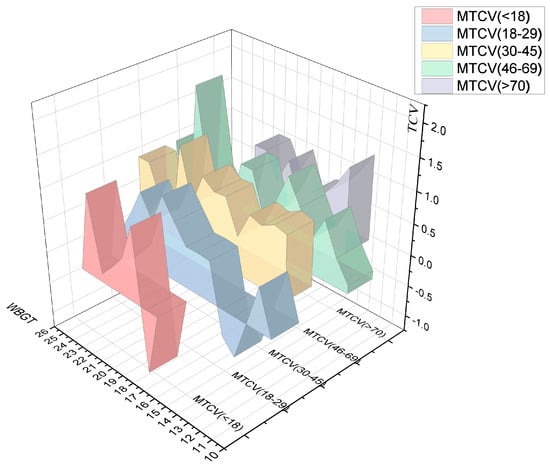
Figure 18.
Comparison of the MTCV of different age groups.
From the correlation coefficient, it can be seen that the correlation between constitution preference and TSV was the strongest. To establish the relationship between the TSV and WBGT among different subject groups of temperature preference in winter and spring, WBGTs were grouped by interval of 1 °C and the TSV in each interval were averaged. From Figure 19, it can be seen that there were linear positive correlations between the TSV and WBGT for respondents who liked heat and those who liked a neutral thermal environment. The TSV and WBGT showed a binomial correlation for those who liked cold and feared heat.
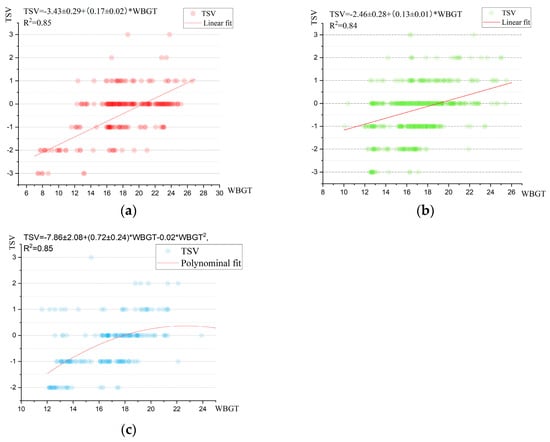
Figure 19.
Correlation between TSV and WBGT among different groups of temperature preference for heat in winter and spring. (a) Likes heat and fears cold; (b) neutral; (c) likes cold and fears heat.
According to Table 10, it can be seen that people who preferred heat and feared cold had the highest neutral WBGT, followed by those who preferred a moderate environment of neither hot nor cold. People who preferred cold and feared heat had the lowest neutral WBGT, which was in line with common sense. Respondents who preferred cold and feared heat had the widest range of neutral WBGT threshold, followed by those who preferred a moderate environment of neither cold nor hot. People who preferred heat and feared cold had the narrowest range of neutral temperature threshold. The neutral WBGT ranges were 15.4–23.9 °C, 15.1–22.8 °C and 17.6–23.6 °C, while the neutral WBGT was 18.0 °C, 19.1 °C and 20.5 °C. This indicated that people who enjoyed the cold and feared the heat had the highest adaptability to the thermal environment in outdoor sports spaces during the winter and spring. People who preferred a moderate environment of neither cold nor hot had a medium adaptability, while those who enjoyed the heat and feared the cold had the worst adaptability.

Table 10.
Comparison of the neutral WBGT and neutral WBGT range among different groups of temperature preference in winter and spring.
5.4. The Ground Thermal Insulation Performance
The quantitative analysis for G, Ta and Tgm this time were conducted with integrated various types of ground materials. Next time, specific material types can be distinguished to obtain quantitative differences between each material. For all kinds of ground materials, the EPDM surface and acrylic acid had the best thermal insulation performance, followed by terrazzo, square tiles, square stone bricks and pedestrian road bricks. Cement and artificial turf were the worst. Although the artificial turf had the worst performance, its friendly color and natural form can improve the space’s attractiveness. As Pressman said in Harsh Living Conditions, we should remember “thinking winter” within a “year round” habitability perspective [44]. In the future, the usage of ground materials should be synthetically considered from the perspective of heat dissipation in summer and visual comfort. Eliasson’s study suggested that the physical components of a place can be designed to affect the microclimate of a specific location and thereby affecting people’s attendance, perceptions and emotions related to the place [17]. Future research can be carried out in depth to understand the material properties of ground, sports facilities and urban furniture and their impact on users’ thermal comfort, so as to explore the design strategies of outdoor sports space.
5.5. Design Strategies for Outdoor Sports Spaces
People have a strong tendency to seek sunshine in winter. The solar radiation intensity of outdoor sports spaces in humid subtropical areas can be controlled through design to regulate Ta. As mentioned earlier, the “slightly warm” sensation (TSV = 1) was more comfortable in winter. By offering more sunshine in outdoor sports space during winter, Ta would rise, and the overall thermal comfort improved. Furthermore, residents’ attendance would also increase. In the design process of residential areas, the spacing between buildings should be well controlled to leave enough space for outdoor sports spaces, so that they can have sufficient sunlight in winter. This matched Chen’s study [45] which was conducted in subtropical Shanghai, China, that the development of public open spaces’ adjacent areas should be controlled to ensure enough sunshine in winter.
Ta can also be adjusted by selecting appropriate ground materials. By choosing the right ground materials, it can improve the overall microclimate thermal comfort conditions in the area. When being used in a large area, it can also improve the environment quality, and reduce the intensity of heat islands [40]. The thermal insulation performance in cold seasons, cooling effects in hot seasons, visual comfort, wear resistance and life length of the ground materials need to be considered together to choose the right ground materials for outdoor sports space. Some studies have also considered the issue of disability inclusivity, and the use of cast-in-place rubber PIP in playground was optimal [46].
This study compared the shaded spots and unshaded spots at the same site and found that the vegetation coverage had a significant impact on the microclimate. Although there has been no further research on how much coverage was scientifically appropriate, there are plenty of other existing studies that validate it (Lin et al. [10]; Hwang et al. [15]; Hwang et al. [43]; Lin et al. [47]). Therefore, we will not go into more details here at this time.
Due to the annual unique climate characteristics of humid subtropical areas, where solar radiation is strong and it rains frequently, it is recommended to add semi-outdoor spaces or indoor spaces next to outdoor sports spaces. Although some outdoor sports spaces covered by trees can provide shelter from moderate or light rain to a certain extent, semi-outdoor spaces with roofs cannot be replaced by trees or pergolas with shading effect. It can provide sunshade from strong sunshine and shelter from heavy rain so as to improve the overall thermal comfort and increase the usage rate of outdoor sports spaces.
5.6. Limitations
People’s thermal comfort and thermal sensation in outdoor environments are influenced by several factors, including physical, physiological, psychological and social/behavioral factors [26,27,28]. Although this article collected basic information about the respondents, due to its research focus, this study did not further examine the impact of subjects’ personal factors on human thermal environmental adaptability and environmental perception in various seasons. Future research could analyze subjects’ occupation, clothing status, health level, endurance adaptability, cultural background, psychological adaptation and physiological regulation on human environmental adaptability. Moreover, this study did not take into account the impact of outdoor physical activity duration. Future studies could deeply examine and analyze the subjects’ physical and psychological changes in the light of the duration of physical activities and after ending the activity to see the needed time to achieve heat balance after exercise.
As Li said in 1994, winter issues are not related to cold climate only, and an excellent microclimate design must be combined with the general prerequisites of a successful urban space; only then can a urban space be successful in all the seasons [19]. This study was based on the issue of outdoor thermal comfort in winter and spring. The relationship between the outdoor thermal environment and the thermal comfort of outdoor activities for users in summer and autumn can be further verified in the future. In addition to thermal comfort, the general prerequisites of a successful urban space should also consider the variety and quantity of outdoor space spaces and facilities, visual comfort, accessibility, safety and health benefit. These are important issues that can be studied when considering outdoor sports space design in the future.
6. Conclusions
This study took outdoor sports spaces in residential areas of Xiamen as the research object and selected typical cases to research. Using such methods as site observation and recording, meteorological measurements, questionnaire surveys and interviews, the microclimate characteristics of outdoor sports spaces in winter and spring were thoroughly investigated, and factors which influence outdoor thermal comfort and residents’ physical activities were learned. The main conclusions are as follows.
- (1)
- In humid subtropical areas, the human comfort WBGT threshold for outdoor sports spaces in winter and spring was 14.2–21.7 °C, while it ranged from 15.5 to 20.5 °C in winter and from 16.4 to 23.0 °C in spring. Among the subjects’ personal factors, temperature preference for heat had the most influence on thermal perception, followed by age and gender. As for the adaptability to the thermal environment in outdoor sports spaces during the winter and spring, people who enjoyed the cold and feared the heat had the best adaptability, followed by people who preferred a moderate environment and those who enjoyed the heat and feared the cold. The neutral WBGT ranges were 15.4–23.9 °C, 15.1–22.8 °C and 17.6–23.6 °C, while the neutral WBGT was 18.0 °C, 19.1 °C and 20.5 °C. Females were more sensitive to the changes in the thermal environment and men had a much higher tolerance for low temperatures than women. People who were 30–69 years old had the best adaptability to outdoor sports spaces in winter and spring, followed by the older population (age > 70), and the younger population had the worst endurance (age < 30).
- (2)
- For people doing low-intensity physical activity, the WBGT range when residents felt comfortable (+1) or very comfortable (+2) was between 13.7 and 26.2 °C during winter and spring. After moderate-intensity sports activities, most residents’ comfort range narrowed to 14.5–24.0 °C. For the high-intensity sports activities, the comfortable range was between 16.0 and 22.0 °C. As the intensity of physical activity increased, the thermal comfort range narrowed and the sensitivity to the thermal environment increased. In addition, it is still necessary to pay attention to preventing unconscious heatstroke or burns when engaging in moderate- and high-intensity activities for persons unacclimatized to heat. aAnd for those acclimatized to heat, they should still take care when joining high and very high intensity activities during winter and spring. Extreme cold weather also requires attention to cold prevention.
- (3)
- In humid subtropical areas, the main thermal comfort factors while residents doing outdoor sports activities were Ta, G and RH during winter and spring. It is worth noting that the thermal comfort factors varied from different intensities of physical activities. Ta and G had the greatest impact on low-intensity sports activities. Ta and RH had the greatest impact on moderate-intensity sports activities. Ta, RH and Va had a significant impact on high-intensity sports activities. As the intensity of physical activity increased, the proportion of people who believed that Ta and G were the main factors affecting thermal comfort decreased. According to the measurement results of meteorological conditions in winter and spring, there was a significant negative correlation between the average Ta and average RH, while there was a prominent positive correlation between average wind speed and WBGT.
- (4)
- In winter, it was more comfortable to have “slightly warm” (TSV = 1) than “‘neutral” (TSV = 0) weather, while in spring, it was more comfortable to be “neither hot nor cold” than other sensation. The WBGT comfort range with a “slightly warm” sensation in winter was 14.8–22.6 °C, and the WBGT comfort range with a “neutral” sensation in spring was 16.4–23.0 °C. When the WBGT was equal to 14.2–21.7 °C, it belonged to the moderate range of neither cold nor hot for both seasons. The TSV change ranges were 3.82 in winter and 2.47 in spring, while the WBGT range variation was kept the same at 15 °C. It follows that the subjects’ thermal sensation was more sensitive in winter than in summer in the humid subtropical areas.
- (5)
- The ground materials, sunshine and vegetation coverage of outdoor sports spaces in humid subtropical areas all had a significant impact on adjusting Ta in the microclimate. When choosing the ground materials for an outdoor sports space, the thermal insulation performance in cold seasons, cooling effects in hot seasons, visual comfort, disability inclusivity, wear resistance and life length of the ground materials should be considered together. For all kinds of ground materials, the EPDM surface and acrylic acid had the best thermal insulation performance in winter and spring, followed by terrazzo, square tiles, square stone bricks, and pedestrian road bricks. Cement and artificial turf had the worst performance.
- (6)
- In addition to thermal comfort, factors such as time, weather, the variety and quantity of outdoor space spaces and facilities, high visual comfort, good accessibility, strong safety, regular maintenance of the space and facilities and the sharing level of outdoor sports spaces all had a major impact on outdoor sports activities. The highest attendance of residents was in the midmorning (9:30–11:30), in the afternoon (16: 30–18:00) and in the evening (19:00–20:00) in both the community park and residential quarter’s communal parks.
- (7)
- Due to the annual unique climate characteristics of humid subtropical areas, where solar radiation is strong and it rains frequently, it is recommended to add semi-outdoor spaces with roofs or indoor spaces next to outdoor sports spaces. It can provide sunshade from strong sunshine and shelter from heavy rain, so as to improve the overall thermal comfort and increase residents’ outdoor physical activity. In the urban design process, increasing the development of low and moderate intensity outdoor sports space and facilities was beneficial for improving the overall thermal comfort.
Author Contributions
Conceptualization, J.Y.; methodology, J.Y.; validation, J.Y. and Z.W.; formal analysis, J.Y. and W.L.; investigation, J.Y. and W.L.; resources, Z.W.; data curation, J.Y.; writing—original draft preparation, J.Y.; writing—review and editing, J.Y. and Z.W.; visualization, J.Y. and W.L.; supervision, Z.W.; project administration, W.L.; funding acquisition, Z.W. All images in the article were drawn or taken by the authors. All authors have read and agreed to the published version of the manuscript.
Funding
This work was funded by the Scientific Research Funds of Huaqiao University, no. 605-50X19022.
Institutional Review Board Statement
The study was approved by the Medical Ethics Committee of Huaqiao University (ID No. M2022014), China. Signed informed consent was obtained from all subjects included in the study.
Data Availability Statement
The authors do not have permission to share data.
Conflicts of Interest
The authors declare no conflict of interest. The funders had no role in the design of the study; in the collection, analyses, or interpretation of data; in the writing of the manuscript; or in the decision to publish the results.
References
- Hallal, P.C.; Andersen, L.B.; Bull, F.C.; Guthold, R.; Haskell, W.; Ekelund, U. Global physical activity levels: Surveillance progress, pitfalls, and prospects. Lancet 2012, 380, 247–257. [Google Scholar] [CrossRef]
- Fang, W.T.; Eric, N.; Chang, M.C. Physical Outdoor Activity versus Indoor Activity: Their Influence on Environmental Behaviors. Int. J. Environ. Res. Public Health 2017, 14, 797. [Google Scholar] [CrossRef]
- Zhao, X.; Bian, Q.; Hou, Y.; Zhang, B. A study on the correlation between spring leisure physical activity levels and microclimate thermal comfort in cold city parks. Chin. Landsc. Arch. 2019, 35, 80–85. (In Chinese) [Google Scholar] [CrossRef]
- Bedimo-Rung, A.L.; Mowen, A.J.; Cohen, D.A. The significance of parks to physical activity and public health: A conceptual model. Am. J. Prev. Med. 2005, 28, 159–168. [Google Scholar] [CrossRef] [PubMed]
- Wang, X.; Rodiek, S. Older Adults’ Preference for Landscape Features Along Urban Park Walkways in Nanjing, China. Int. J. Environ. Res. Public Health 2019, 16, 3808. [Google Scholar] [CrossRef]
- Chang, P.J. Effects of the built and social features of urban greenways on the outdoor activity of older adults. Landsc. Urban Plan. 2020, 204, 103929. [Google Scholar] [CrossRef]
- Lin, T.P. Thermal perception, adaptation and attendance in a public square in hot and humid regions. Build. Environ. 2009, 44, 2017–2026. [Google Scholar] [CrossRef]
- Mora, R. Moving Bodies: Open Gyms and Physical Activity in Santiago. J. Urban Des. 2012, 17, 485–497. [Google Scholar] [CrossRef]
- Chancellor, B. Primary school playgrounds: Features and management in Victoria, Australia. Int. J. Play. 2013, 2, 63–75. [Google Scholar] [CrossRef]
- Lin, T.-P.; Tsai, K.-T.; Liao, C.-C.; Huang, Y.-C. Effects of thermal comfort and adaptation on park attendance regarding different shading levels and activity types. Build. Environ. 2013, 59, 599–611. [Google Scholar] [CrossRef]
- Mahmoud, A.H.A. Analysis of the microclimatic and human comfort conditions in an urban park in hot and arid regions. Build. Environ. 2011, 46, 2641–2656. [Google Scholar] [CrossRef]
- Leng, H.; Liang, S.; Yuan, Q. Outdoor thermal comfort and adaptive behaviors in the residential public open spaces of winter cities during the marginal season. Int. J. Biometeorol. 2020, 64, 217–229. [Google Scholar] [CrossRef]
- Thorsson, S.; Honjo, T.; Lindberg, F.; Eliasson, I.; Lim, E.M. Thermal comfort and outdoor activity in Japanese urban public places. Environ. Behav. 2007, 39, 660–684. [Google Scholar] [CrossRef]
- Akio, M.; Akio, I.; Tadao, K. Investigation and research on the formation of thermal environment in external space of buildings:Thermal environment index and declaration of temperature insensible. In Research Report of Kyushu Branch of Architectural Institute of Japan; Architectural Institute of Japan: Kyushu, Japan, 1986; Volume 29, pp. 141–144. Available online: https://www.aij.or.jp/paper/detail.html?productId=349803 (accessed on 7 August 2023). (In Japanese)
- Hwang, R.L.; Lin, T.P.; Cheng, M.J.; Lo, J.-H. Adaptive comfort model for tree-shaded outdoors in Taiwan. Build. Environ. 2010, 45, 1873–1879. [Google Scholar] [CrossRef]
- Yannas, S. Toward more sustainable cities. Sol. Energy 2001, 70, 281–294. [Google Scholar] [CrossRef]
- Eliasson, I.; Knez, I.; Westerberg, U.; Thorsson, S.; Lindberg, F. Climate and behaviour in a Nordic city. Landsc. Urban Plan. 2007, 82, 72–84. [Google Scholar] [CrossRef]
- Thorsson, S.; Lindqvis, M.; Lindqvis, S. Thermal bioclimatic conditions and patterns of behaviour in an urban park in Goteborg, Sweden. Int. J. Biometeorol. 2004, 48, 149–156. [Google Scholar] [CrossRef]
- Li, S. User’s behavior of small urban spaces in winter and marginal seasons. Archit. Behav. 1994, 10, 95–109. [Google Scholar]
- Nakano, J.; Tanabe, S. Thermal adaptation and comfort zones in urban semi-outdoor environments. Front. Built Environ. 2020, 6, 1–13. [Google Scholar] [CrossRef]
- Da Silveira Hirashim, S.Q.; de Assis, E.S.; Nikolopoulou, M. Daytime thermal comfort in urban spaces: A field study in Brazil. Build. Environ. 2016, 107, 245–253. [Google Scholar] [CrossRef]
- Wang, Y.; Ni, Z.; Peng, Y.; Xia, B. Local variation of outdoor thermal comfort in different urban green spaces in Guangzhou, a subtropical city in South China. Urban For. Urban Green. 2018, 32, 99–112. [Google Scholar] [CrossRef]
- Zhao, L.; Zhou, X.; Li, L.; He, S.; Chen, R. Study on outdoor thermal comfort on a campus in a subtropical urban area in summer, Sustain. Cities Soc. 2016, 22, 164–170. [Google Scholar] [CrossRef]
- Lin, T.P.; Tsai, K.T.; Hwang, R.L.; Matzarakis, A. Quantification of the effect of thermal indices and sky view factor on park attendance. Landsc. Urban Plan. 2012, 107, 137–146. [Google Scholar] [CrossRef]
- Zhou, Z.; Chen, H.; Deng, Q.L. A field study of thermal comfort in outdoor and semi-outdoor environments in a humid subtropical climate city. J. Asian Arch. Build. Eng. 2013, 12, 73–79. [Google Scholar] [CrossRef]
- Heng, S.L.; Chow, W. How ‘hot’ is too hot? Evaluating acceptable outdoor thermal comfort ranges in an equatorial urban park. Int. J. Biometeorol. 2019, 63, 801–816. [Google Scholar] [CrossRef] [PubMed]
- Li, K.M.; Zhang, Y.F.; Zhao, L.H. Outdoor thermal comfort and activities in the urban residential community in a humid subtropical area of China. Energy Build. 2016, 133, 498–511. [Google Scholar] [CrossRef]
- Wang, Q.; Li, M.; Li, X.Y. Research on the landscape design of fitness facilities in community parks based on microclimate human comfort. Chin. Landsc. Arch. 2021, 37, 68–73. (In Chinese) [Google Scholar] [CrossRef]
- ISO 7726-1998; Ergonomics of the Thermal Environment Instruments for Measuring Physical Quantities. International Organization for Standardization: Geneva, Switzerland, 1998.
- ISO 10551-2019; Ergonomics of the Physical Environment—Subjective Judgement Scales for Assessing Physical Environments. International Organization for Standardization: Geneva, Switzerland, 2019.
- GB/T 18977-2003; Ergonomics of Thermal Environment, Evaluation of the Impact of Thermal Environment Using Subjective Judgment Scales. General Administration of Quality Supervision, Inspection and Quarantine of the People’s Republic of China: Beijing, China, 2003. (In Chinese)
- Zhang, L.; Meng, Q.L.; Zhao, L.H.; Zhang, Y.F. Simplified calculation method for urban thermal environment evaluation indicators in humid and hot areas. J. South China Univ. Technol. 2008, 36, 96–100. (In Chinese) [Google Scholar]
- Nikolopoulou, M.; Baker, N.; Steemers, K. Thermal comfort in outdoor urban spaces: Understanding the human parameter. Sol. Energy 2001, 70, 227–235. [Google Scholar] [CrossRef]
- Lin, B.R. Research on the Impact of Greening on Outdoor Thermal Environment. Ph.D. Thesis, Tsinghua University, Beijing, China, 2004. [Google Scholar]
- ASHRAE. Physiological Principles and Thermal Comfort. In Handbook of Fundamentals; American Society of Heating, Refrigerating and Air-Conditioning Engineers: Atlanta, CA, USA, 2001; Chapter 8; pp. 8.1–8.20. [Google Scholar]
- ASHRAE Standard 55-2017; Thermal Environmental Conditions for Human Occupancy. Standing Standard Project Committee: Atlanta, CA, USA, 2017.
- Shah, Y.; Kurelek, J.W.; Peterson, S.D.; Yarusevych, S. Experimental investigation of indoor aerosol dispersion and accumulation in the context of COVID-19: Effects of masks and ventilation. Phys. Fluids 2021, 33, 073315. [Google Scholar] [CrossRef]
- Jin, L.; Meng, Q.L.; Zhao, L.H. Thermal comfort of a courtyard in Guangzhou in Summer. In Proceedings of the Indoor Air Quality and Climate, Beijing, China, 4–9 September 2005. [Google Scholar]
- ISO 7243-2017; Ergonomics of the Thermal Environment Assessment of Heat Stress Using the WBGT. International Organization for Standardization: Geneva, Switzerland, 2017.
- Santamouris, M.; Gaitani, N.; Spanou, A.; Saliari, M.; Giannopoulou, K.; Vasilakopoulou, K.; Kardomateas, T. Using cool paving materials to improve microclimate of urban areas-Design realization and results of the flisvos project. Build. Environ. 2012, 53, 128–136. [Google Scholar] [CrossRef]
- Kruger, E.L.; Rossi, F.A. Effect of personal and microclimatic variables on observed thermal sensation from a field study in southern Brazil. Build. Environ. 2011, 46, 690–697. [Google Scholar] [CrossRef]
- Zhou, Z.Q.; Liang, D. Experimental investigation of the effect of surgical masks on outdoor thermal comfort in Xiamen, China. Build. Environ. 2022, 229, 109893. [Google Scholar] [CrossRef] [PubMed]
- Hwang, R.L.; Lin, T.P. Thermal Comfort Requirements for Occupants of Semi-Outdoor and Outdoor Environments in Hot-Humid Regions. Arch. Sci. Rev. 2007, 50, 357–364. [Google Scholar] [CrossRef]
- Pressman, N. Harsh Living Conditions: A Research Agenda. Habitat Int. 1989, 13, 13–22. [Google Scholar] [CrossRef]
- Chen, L.; Wen, Y.; Zhang, L.; Xiang, W.N. Studies of thermal comfort and space use in an urban park square in cool and cold seasons in Shanghai. Build. Environ. 2015, 94, 644–653. [Google Scholar] [CrossRef]
- Auchterlonie, R.; Brannock, C.; Jackson, V.; Luong, A.; Weeks, K.; Valdez, R. Guiding the Design of Inclusive Playgrounds through Needs Assessment and Materials Selection; IEEE Press: Charlottesville, VA, USA, 2021; pp. 1–6. [Google Scholar] [CrossRef]
- Lin, T.P.; De Dear, R.; Hwang, R.L. Effect of thermal adaptation on seasonal outdoor thermal comfort. Int. J. Clim. 2011, 31, 302–312. [Google Scholar] [CrossRef]
Disclaimer/Publisher’s Note: The statements, opinions and data contained in all publications are solely those of the individual author(s) and contributor(s) and not of MDPI and/or the editor(s). MDPI and/or the editor(s) disclaim responsibility for any injury to people or property resulting from any ideas, methods, instructions or products referred to in the content. |
© 2023 by the authors. Licensee MDPI, Basel, Switzerland. This article is an open access article distributed under the terms and conditions of the Creative Commons Attribution (CC BY) license (https://creativecommons.org/licenses/by/4.0/).
